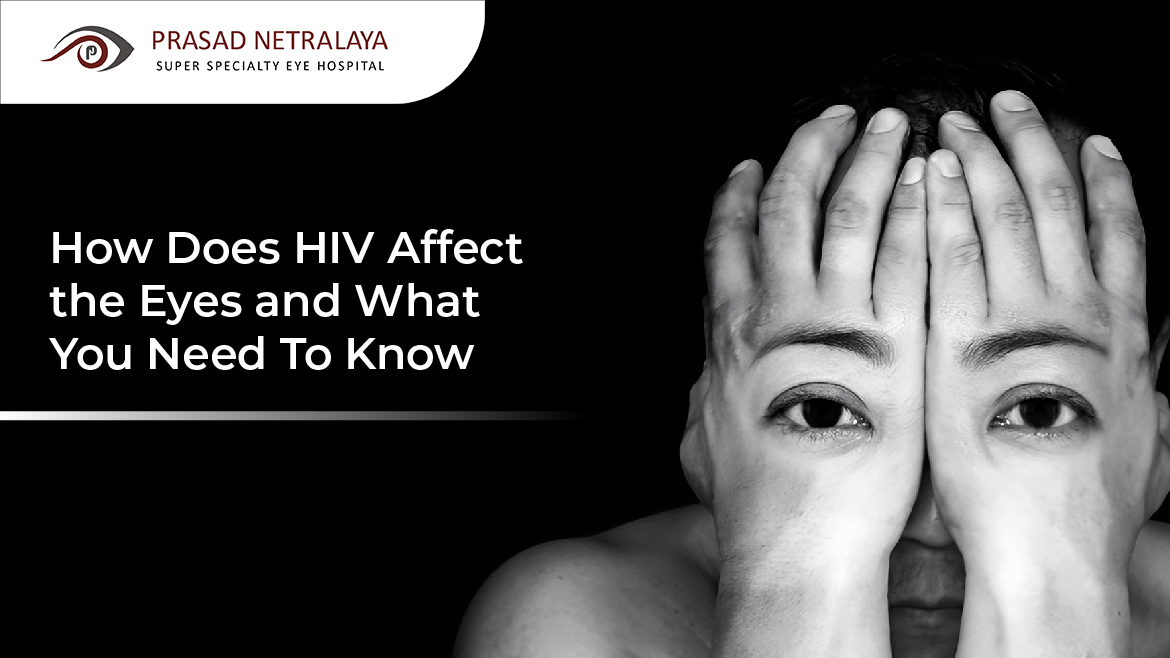The eyes are only one of several body parts that are negatively impacted by HIV. The greater your ability to manage your illness, the less likely you are to have vision issues that might result from the infection. Nonetheless, those living with HIV should get frequent eye exams and be aware of the warning indications of visual problems. In case you’re wondering how does HIV affect the eyes, then here is a list of the most common HIV-related eye conditions that one may encounter.
Before we begin, let’s first understand how HIV can affect our eyes.
Table of Contents
How Does HIV Affect the Eyes?
Your eyes are just as vulnerable to infection as the rest of your body. As many as 70% of people with severe AIDS suffer from eye illnesses such as HIV retinopathy and CMV retinitis and toxoplasma retinitis. Kaposi’s sarcoma and squamous cell carcinoma of the conjunctiva are two rare forms of ocular surface tumors.
The following are the symptoms of eye infection in HIV patients:
- Blurry vision
- Eye floaters
- Eyelid growths
- Eye pain
- Reduced peripheral vision
Common Eye Infections in HIV Patients
Here are some common eye infections in HIV patients.
1. HIV Retinopathy
HIV retinopathy occurs when the virus involves the retina, the inner layer of the back of the eye. HIV retinopathy symptoms mostly show up during routine eye check-ups.
When examining your eyes, a doctor may see blood vessel damage or “cotton wool” patches, so-called due to their fluffy white appearance. A smaller field of vision and altered sensitivity to color and contrast are possible effects, but they typically do not impair vision or necessitate therapy.
2. CMV Retinitis
A retinal infection is caused by the cytomegalo virus(CMV). Those who have advanced HIV typically experience this.
If you have symptoms such as floating spots, flashes, impaired vision, or blind patches, you should see an eye doctor immediately.
There may be no outward indications, but your eye specialist will be able to detect CMV with a thorough examination. The antiviral medications ganciclovir and valganciclovir are effective against CMV retinitis. Medications may be given orally or directly into the eyes.
3. Immune Recovery Uveitis
Uveitis is an inflammation of the uveal tract located in the central layer of the eye. Up to 60% of HIV patients who on ART medications can have this as a treatment-related adverse effect.
Cataracts, glaucoma, and ocular hypertension (high blood pressure in the eyes) are only some of the complications that can arise from IRU. Mild IRU usually clears itself without any therapy, but if the inflammation or symptoms are severe, such as seeing floating dots, impaired vision, and eye discomfort, then steroids may be necessary.
4. Herpes Zoster Ophthalmicus (HZO)
It can spread to everyone who has ever had chickenpox. 5–15% of HIV-positive patients have this condition. Blistering and crusting occur, typically around the eyes and cheeks. Inflammation of the iris (the colored area of the eye) and, less frequently, the cornea can result. Antiviral drugs like acyclovir, famciclovir, or valacyclovir can alleviate the symptoms.
4. Dry Eyes
Dry eyes affect about 20% of those living with HIV. The inflammation of the eyelid, known as blepharitis, which is a common eye infection in HIV patients, can worsen dryness. Lubricating eye drops and artificial tears can assist.
What Is the Most Common HIV-Related Eye Infection?
The most common infection is HIV retinopathy and CMV retinitis. It causes damage to the retina, wreaking havoc on the eye’s blood vessels. However, if caught and treated early, it’s curable. Retinopathy is more frequent in older adults with HIV, and diabetes is another risk factor for developing this illness.
What Is the Best Way To Treat HIV-Related Retinopathy?
Small hemorrhages or bleeding inside the retina are indications of HIV microvasculopathy. In addition, the person may see what are known as “cotton wool dots” in their visual field.
HIV retinopathy treatment options will be determined by the underlying cause of the condition. Those who adhere to their HIV treatment regimens reduce their risk of developing retinopathy and other eye complications.
Even though the prognosis for HIV patients has greatly improved thanks to antiretroviral medication, it is nevertheless recommended that those with a CD4 level of less than 200 per microliter have yearly complete eye checkups with an ophthalmologist.
The doctor will be able to see any developing difficulties during these checkups before they become catastrophic.
Can AIDS Cause Blindness?
Yes, AIDS can cause blindness. Long-term HIV infection without treatment can cause blindness by activating a latent virus called cytomegalovirus (CMV). The main reason for blindness in HIV patients is cytomegalovirus.
How Often Should You Visit Your Doctor?
The optimal frequency of visits to the optometrist for eye care depends from person to person. If your HIV is under control, you may only need to see your doctor once a year, but if your CD4-T cell count is low, you may need to see them every three months. The risk of developing eye issues increases with both a low white blood cell count and a high viral load.
Also Read : Thinking of Consulting a New Eye Specialist? Read This First!
Safeguard Your Eye Health
Now that you know how HIV affects the eyes, you shouldn’t put off going to the eye doctor if you’re experiencing problems. Visit your doctor frequently. Some eye infections caused by HIV don’t necessarily have obvious early indicators, yet they can nevertheless cause permanent vision loss.
Cataracts and other signs of aging can develop in people infected with HIV at a much younger age than is typical. Early detection is possible with routine eye examinations. Visit Prasad Netralaya Eye Hospital to get your eye check-up and treatment if you have any ailment.



